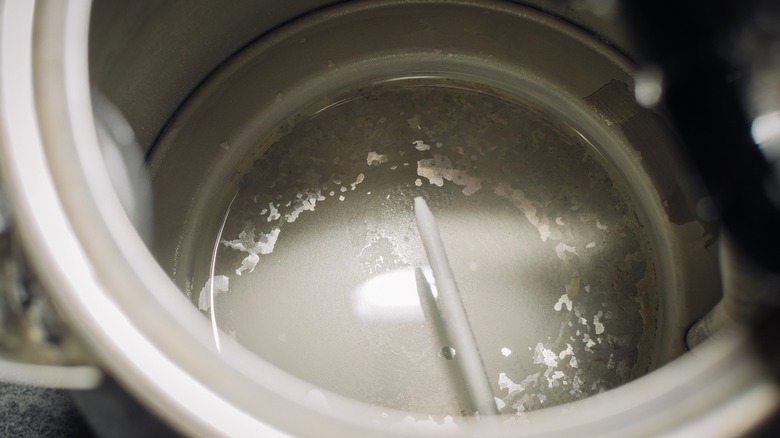You're Probably Over-Cleaning Your Electric Kettle (And How To Do It Properly)
Electric kettles can be a cute and useful addition to any space, even those traditionally outside of or lacking a proper kitchen set-up, like dorm rooms and home offices. In the kitchen, they provide a safe and speedy way to heat water conveniently and fast without having to use the stove. While some have discussed the downsides of electric kettles, including cost and longevity, they are still a popular option for boiling water quickly and efficiently. If yours gets a lot of use, you may be wondering how often it needs to be cleaned and how best to do the job.
Most often, however, these convenient appliances do not need to be washed with each use or as often as you think, instead requiring an occasional cycle of a vinegar and water solution to keep the insides pristine. Unlike other appliances in the kitchen, kettles only use plain water, which eliminates concerns of dirt and bacteria from other materials mucking up the inside or spout of your kettle. Electric kettles can like any coffeepot or stove tea kettle, however, suffer from a scaley mineral build-up inside after many uses. Here's how to clean your electric kettle.
Descaling your electric kettle
To keep your kettle clean, we recommend dealing with the build-up every one to three months depending on how often you use it, or when you begin to notice the kettle is not pouring at full capacity. This timeline also depends on the water you use — if you have hard water, you may need to clean the kettle more often.
You may also note a visible white film around the inside. This build-up, created from the minerals in the water, can easily be eliminated by mixing a solution of water with a small amount of vinegar together in the kettle and letting it boil then sit for 10 minutes. Avoid scrubbing the interior, as this can damage the kettle. Repeat as needed until the residue is gone, then allow the kettle to dry before using again. You can also use a solution of one to two tablespoons of baking soda and water, or one tablespoon of lemon juice and water.
The variety of water you use in the kettle will determine the frequency and intensity of build-up, with hard water containing the most scale-creating minerals. For daily care, wipe down the exterior to remove water spots and simply empty the electric kettle and allow it to dry with the lid open between uses, which will prevent any mold or mildew from moisture collecting inside between uses.

